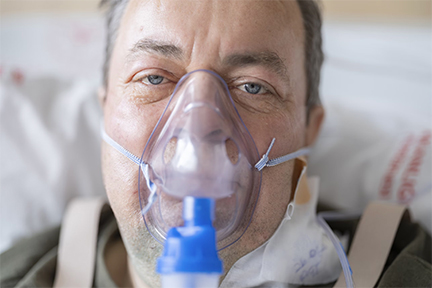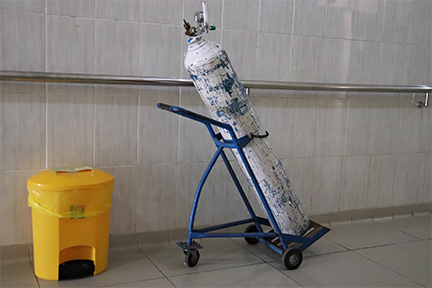
Congestive illnesses of the lungs make it difficult for people to exercise while in outpatient status. Fortunately, there are portable and good-looking oxygen concentrators that allow the patient to breathe freely whenever they are out of their home.
Key Features to Consider
When choosing a portable oxygen concentrator, it's important to consider several key features to ensure it meets your needs:
1. Flow Rate:
The flow rate is the amount of liter per minute (explained better on this forum) signifying how much of the air the concentrator can produce. There are also settings that are adjustable to help those using such a device to regulate the flow of oxygen depending on the preference of the user. As the degree of the person’s respiratory disease increases, higher flow rates are generally necessary.
2. Battery Life:
Durability is a very important factor, especially for those who are dynamic or those who are going to travel. Choose models with deep battery discharge or having an additional option to use external batteries for longer working time.
3. Noise Level:
Since there are many types of oxygen concentrators, some of them make noise when operating, and this is inconvenient, particularly at night or in familiar surroundings. There exists a rather quiet variant for those who would like to remove the source of noise from their living space.
4. Size and Weight:
This is why portability becomes a basis for consideration when buying a concentrator. Portability can also be judged from the size and weight of the device as it has to be easily moved and transported from one place to another. As for active users, the lighter models are obviously more convenient in terms of size.
5. Maintenance Requirements:
As with any other medical devices, the portable oxygen concentrators need to be frequently maintained, so that they can perform as expected. Look up the maintenance features, for example filter replacing and make sure that it is easily feasible by you.
Best Particle Portable Oxygen Concentrator Models
Now that we know the uses of portable air concentrators and the important aspects of their design, let’s discuss particular models of the present moment.
1. Inogen One G5
The Inogen One G5 is arguably one of the most sought-after portable air concentrators due to its lightweight design and efficiency. About 7 pounds, they are one of the lighter oxygen concentrators out there. Due to the six flow settings, users with different levels of oxygen requirement can be served by the G5. It also uses a small lithium-ion battery that can last up to six hours on a single charge and is therefore ideal for a highly active user.
2. Philips Respironics SimplyGo Mini
Another highly recommended POC is the SimplyGo Mini from Philips Respironics for patients in need of continuous flow oxygen support. It is quite light, weighing approximately 1,2 kg and gives up to 9 hours’ usage with an extended battery. As for the oxygen delivery option, the SimplyGo Mini has five flow options to make sure that the user gets the kind of oxygen they need. Because of its enduring and efficient features, it is suitable for individuals who require an excellent portable concentrator that will survive daily usage.
3. Caire FreeStyle Comfort
The Caire FreeStyle Comfort is both transportable and has a comfortable design. Because it is light and small, only five pounds, it has up to eight hours of oxygen delivery on a large battery. The FreeStyle Comfort is designed for easy operation and comes with two carrying options. It offers up to 5 flow settings and is approved for airline use hence it is suitable for the active users who love to travel with their CPAP machines.
4. Invacare Platinum Mobile
The Invacare Platinum Mobile is a reliable portable oxygen concentrator for those who need strong and durable equipment. It comes with four flow options and up to 10 hours battery life with a pack of two batteries. The Platinum Mobile is certified water-resistant and has a strengthened outer casing that sets the device up for outdoor and travel use. A long battery life and the general construction make it suitable for patients who would require oxygen on the go.
Portable Selection Guide
Therefore, the choice of the POC depends on the person’s needs and daily activities. Here are some tips to help you make the best choice:
1. Assess Your Oxygen Requirements:
There is an advertised range of settings, but it is recommended that one consult his/her healthcare provider to advise him /her on the right flow rate and setting for the condition. Here is highlighted information that will assist to make proper decisions in regard to the concentrator selection and equipment.
2. Consider Your Lifestyle:
And then consider how you’ll be utilizing the oxygen concentrator and the diverse environment in which it will be utilized (such as this: https://www.veterinarypracticenews.com/is-an-oxygen-concentrator-right-for-your-practice/). If you want to be on the road a lot or be involved in outside activities a portable model with a longer battery life and rugged, hard clad construction may be the best route to go.
3. Test the Device:
If possible, one should test different models with a view of identifying that which will suit the individual best. Some of the suppliers come with rental services, therefore, giving you a taste of how a particular device works before you invest.
4. Look for Warranty and Support:
Select a POC with a good warranty and customer support option in case of defect in the product or when in need of assistance. This is important so that you can be able to receive support if at all you have a problem with your device.
Conclusion
It appears that portable oxygen concentrators have helped respiratory patients to move around and experience life without the recurring feeling that they might suffocate. Concentrator models currently in the market range from the light-weight ones such as the Inogen One G5 to portable devices such as the AirSep Focus. Knowing the important aspects and taking into account one’s requirements, one can use a portable oxygen concentrator, which is the means to remain independent and lead an active, healthy life to the maximum.
